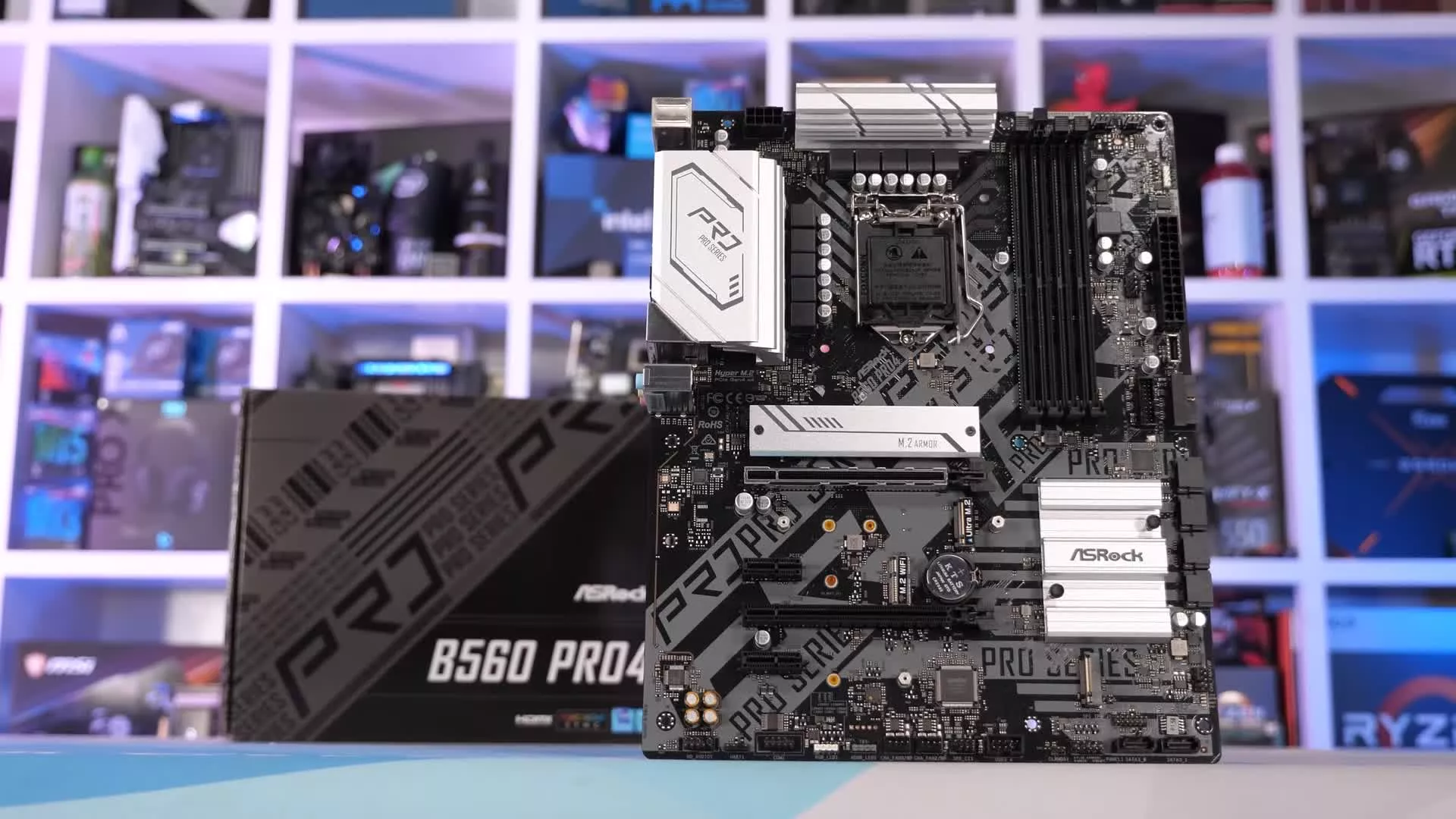I've been testing a ton of Intel Z590 motherboards recently for VRM thermal performance and this has allowed me to take a look at how each board is configured out of the box. For the most part, Z590 motherboards run Intel 11th-gen processors without any enforced power limits, which is perfectly fine and within the loosely defined Intel specification.
I've found that Z590 motherboards from Asus, MSI and Gigabyte all run without power limits, or at least limits that will heavily restrict the performance of parts like the Core i9-11900K. Depending on the motherboard the 11900K will boost to, and maintain, an all-core frequency of 4.7 to 4.8 GHz.
However, Asrock follows the Intel base spec, commonly referred to as the "TDP specification." What that means is the 11900K will boost up to 4.8 GHz for a period of up to 56 seconds before dropping down to 4.3 GHz, where it runs at a package power of 125 watts. In other words, for sustained core-heavy workloads, Asrock Z590 motherboards will clock 11th-gen CPUs around 10% lower than boards from competing brands.
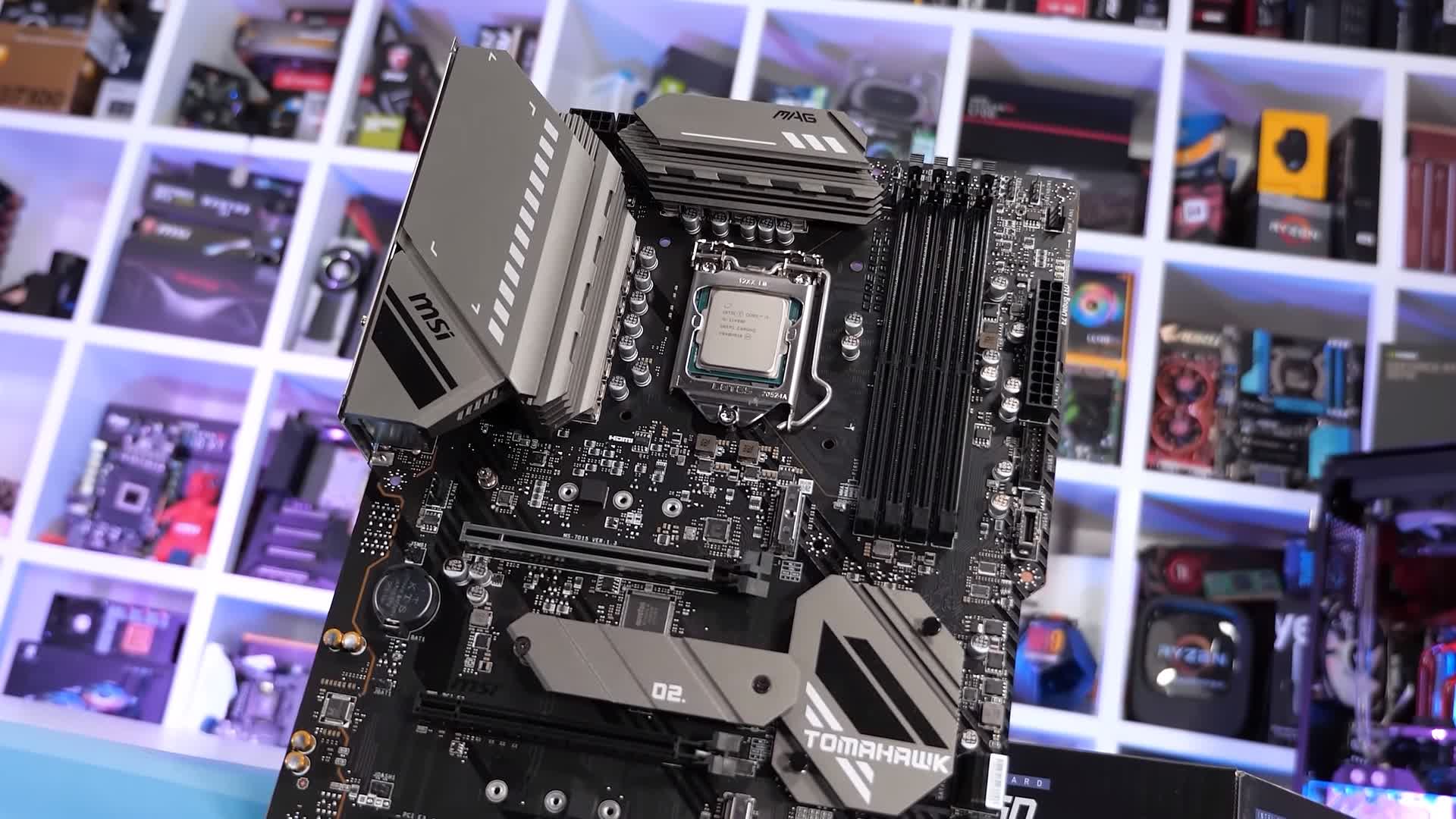
Still, Asrock is operating within the Intel spec, they just happen to be using the minimum specification, whereas Asus, MSI and Gigabyte are maxing that out. It's not great, but at the end of the day, we're only talking about a ~10% frequency discrepancy for sustained workloads and in real-life scenarios, that should typically account to little or nothing in today's games.
However, the focus of today's article is not Z590 motherboards, but rather Intel's B560. These new B-series motherboards make a lot more sense than before on paper. They're now enabled for memory overclocking and with K-SKU processors being somewhat pointless due to the limited overclocking headroom, locked parts like the i5-11400 offer the most value and therefore make the most sense.
There's little point pairing a locked Intel CPU with a Z-series motherboard, especially at a price premium, so I decided to shift my focus towards finding the best value B560 boards... and what a frustrating journey that is proving to be.
I've found testing Intel B560 boards so frustrating that I had to stop testing to write this article, warning readers of the possible pitfalls when buying one such board. What I've discovered is quite alarming and something all potential Intel buyers need to be made aware of.
Depending on the B560 motherboard, performance of locked 65 watt parts like the 11400 and 11700 can be negatively impacted by over 30%. That's right, we're not talking about parts like the Core i9-11900K, but rather processors you will be using with a budget B560 motherboard.
Prior to this testing, the only B560 board that I had looked at was the MSI B560 Tomahawk which we used to review and benchmark the 11400F for our review. Performance was identical to Z590 boards I'd tested from the likes of Asus, MSI and Gigabyte. MSI even told me it was to be expected that B560 motherboards would offer the same level of performance as their Z590 counterparts, but it turns out that's not always the case. Far from it.
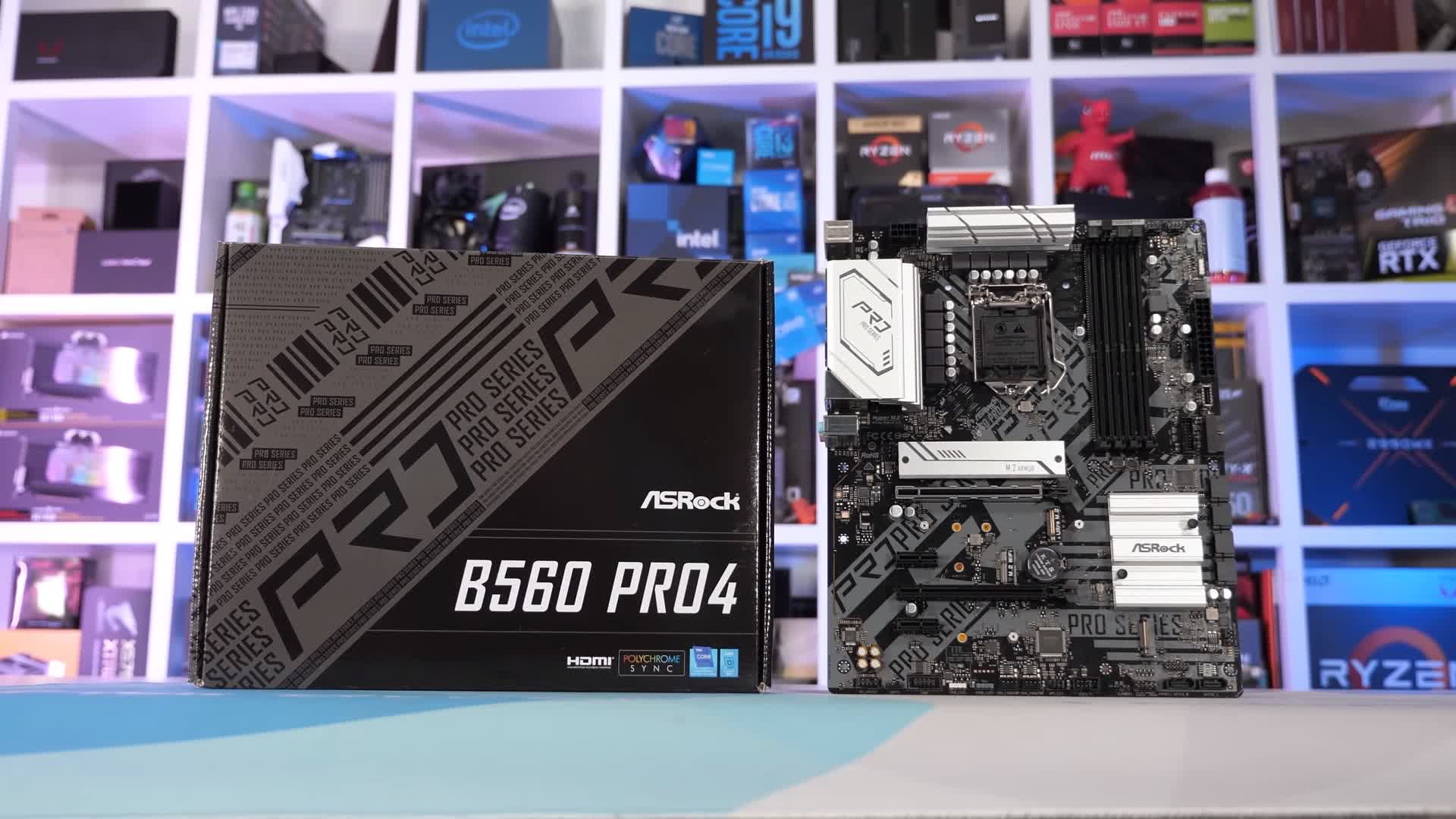
Using the MSI B560 Tomahawk, the 11400F sustained the same 4.2 GHz all-core frequency that we saw on the Z590 boards, and therefore performance remained the same. However, the Tomahawk is a $200 B560 motherboard, which is not inexpensive, and therefore the results were as expected. I also tried out the Gigabyte B560M Aorus Pro AX ($180) which again mirrored the performance previously seen with the Z590 boards.

But because we were looking for the best budget motherboards, we wanted to see how well the cheaper boards handled parts like the i5-11400 and i7-11700. After all, you can run a Ryzen 9 5950X without any performance restrictions on $110 AMD B550 boards like the Gigabyte B550M DS3H and MSI B550M Pro-VDH WiFi, for example.
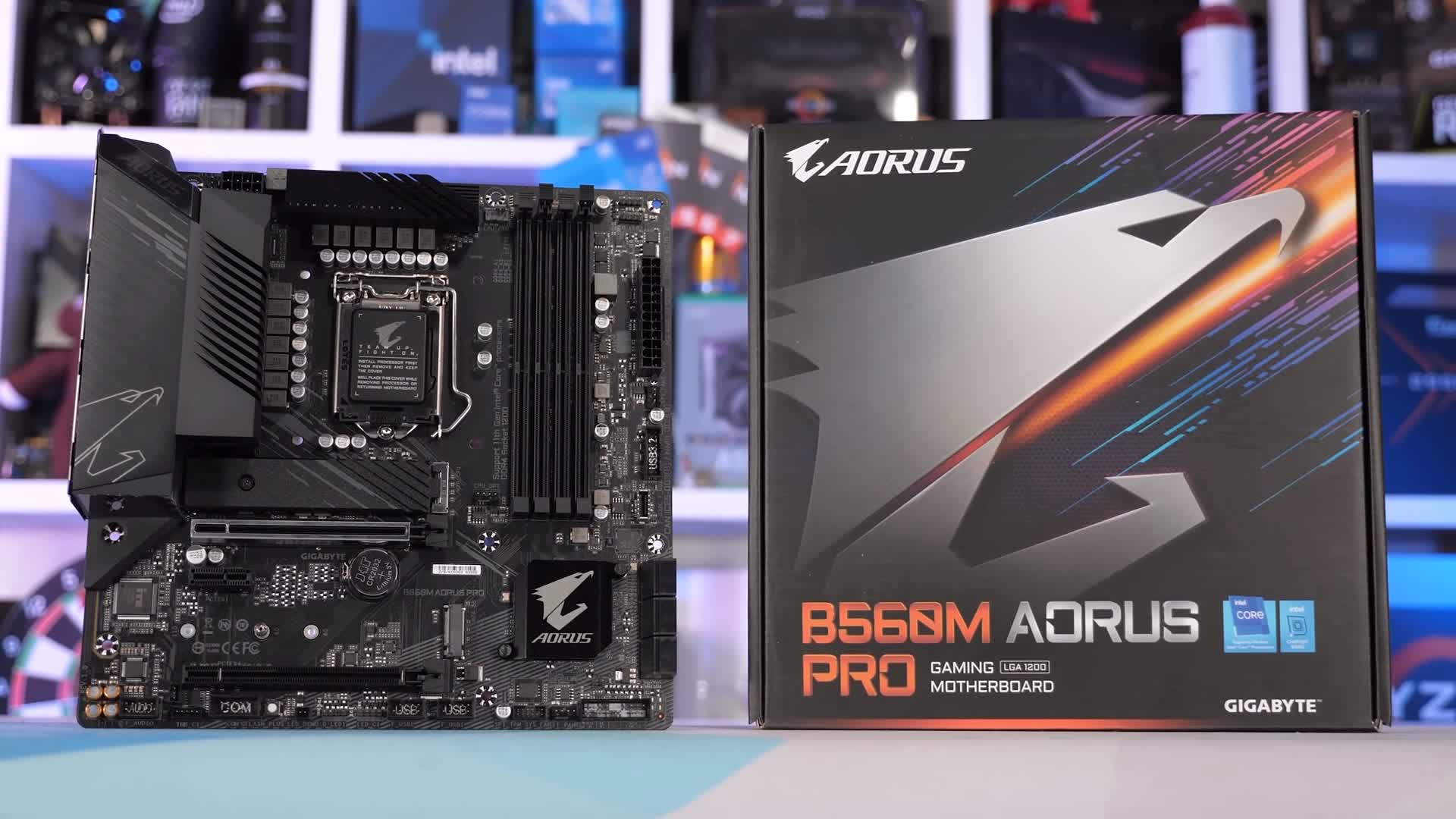
So I went out and purchased the Asrock B560 Pro4 which costs $125. I also have the MSI B560M Pro which should be priced closer to $100, and the Gigabyte B560M DS3H AC, which is another basic board but we haven't seen in retail yet.
We fully expect entry-level Intel B560 boards to be able to run parts like the Core i9-11900K with power limits in place (125 watt TDP spec), and of course, the motherboards are listed to officially support the Core i9 part. What I wasn't entirely sure about was how they would configure 65w parts like the Core i5-11400F, but I did expect that it would be possible to run the 6-core locked processor without power limits to achieve maximum performance, and technically it is.
Core i5-11400 Test: Cinebench and SoTR

Here's a look at how these motherboards perform out of the box using the Core i5-11400F. The $200 Tomahawk and $180 Aorus Pro AX perform as expected, delivering a score of roughly 10,000 points in Cinebench R23.
Both sustain an all-core frequency of 4.2 GHz out of the box. It's also worth noting that this frequency is sustained indefinitely as long as there's sufficient CPU cooling, and we see that after 30 minutes of looping the multi-core test the score remained much the same.
The more affordable Asrock B560 Pro4, Gigabyte B560M DS3H AC and MSI B560M Pro all enforce the 65 watt TDP limit by default, but that doesn't mean the same thing for all boards. Due to slight variations in voltage tuning and efficiency of the board's VRM, the all-core frequency varies within that 65w envelope.
The Asrock B560 Pro4, for example, ran the 11400F at 3380 MHz. That means the Tomahawk and other B560 boards that don't enforce power limits are clocking the processor 24% higher out of the box. But the Pro4 wasn't the worst of the bunch. The MSI B560M Pro clocked even lower at just 3100 MHz, more than 1 GHz lower than the Tomahawk which clocked 35% higher. Then we have the Gigabyte B560M DS3H AC which maintained an all-core frequency of 3500 MHz, or 13% higher than the MSI B560M Pro.
Put differently, in all-core workloads the B560 Tomahawk is 27% faster than the B560M Pro, or worse. The clock frequencies just mentioned were recorded at the end of the 30 minute stress test. So if we ignore the first run where the B560 boards aren't running the entire test at the PL1 power state and look at the result recorded after 30 mins of looping the test, we see that the B560 Tomahawk is actually 35% faster than the B560M Pro.
That's a huge performance difference. We're talking about a different tier of CPU performance, the kind of difference you'd normally expect when upgrading from a 6 to an 8-core CPU of the same architecture, for example.

For those of you focused purely on gaming, the difference isn't as significant, at least in most games that don't max out the 11400F. Testing with Shadow of the Tomb Raider we see a 12% performance uplift from the B560M Pro to the Tomahawk. That's still a reasonable difference, but not close to the 35% margin we saw in Cinebench.
It is possible to remove the power limits and unleash the 11400F on these entry-level B560 boards. How you go about doing this depends on the motherboard, some are easier than others. In the case of the MSI B560M Pro you simply change the cooler option in the BIOS from 'box cooler' to 'water-cooling' and provided you have a sufficient cooler, the CPU will boost up to 4.2 GHz for all-core workloads.
You might be thinking, if that's the case, what's the big deal then? With the Core i5-11400F it's more of a nuisance than anything, and it will catch out inexperienced users who will struggle to work out why their system isn't performing as claimed by reviewers and other users running better boards.
It's a bit messy, but it'll get much worse should it come time to upgrade. The next logical step for those seeking a little extra processing power would be a locked version of the Core i7-11700, and this is where things go very wrong...
Core i7-11700 Test: Cinebench and SoTR

The Tomahawk and Aorus Pro run the 11th-gen processor without power limits, clocking the 11700 to 4.4 GHz, which allowed for a score of just over 14,000 pts.
The cheaper B560 boards weren't nearly as impressive though. The Gigabyte B560M DS3H AC dropped the clock frequency in this test to 3180 MHz, then the Asrock B560 Pro4 sustained just 3155 MHz, and the MSI B560M Pro was the worst at just 2890 MHz.
Incredibly, that means that for a sustained workload which sees Cinebench loop for 30 minutes, the Tomahawk was 43% faster than the B560M DS3H AC and 44% faster than the Asrock B560 Pro4, that's nuts. If you were to buy the MSI B560 Tomahawk with the Core i7-11700, rather than the MSI B560M Pro, you'd have done well, gaining 53% more performance out of the box.

Testing gaming performance proves less demanding but this will vary on the title. In this example, the Tomahawk is 14% faster than the MSI B560M Pro, 9% faster than the Asrock B560 Pro4, and 8% faster than the Gigabyte B560M DS3H AC.
If we remove the power limits and allow the Core i7-11700 to run at full speed, just as we did with the Core i5-11400F, things don't go to plan and this time we run into a show stopper, motherboard VRM performance, the very thing I set out to test...

The MSI B560M Pro can handle a package power of 125 watts fairly well, but going beyond that sees the board run into trouble, forcing it to throttle the CPU to avoid catastrophe. Without power limits, the i7-11700 pushes package power to around 140 watts, depending on the level of voltage used by the board.
Removing the power limits on the B560M Pro with the i7-11700 installed resulted in VRM thermal throttling, and while this still saw the average clock speed raised to 3.8 GHz – a 900 MHz boost there – frequent dips to 800 MHz when throttling makes for a horrible experience. It also means, even if we ignore the VRM throttling issue, the 11700 still clocks 16% higher on boards like the Tomahawk.
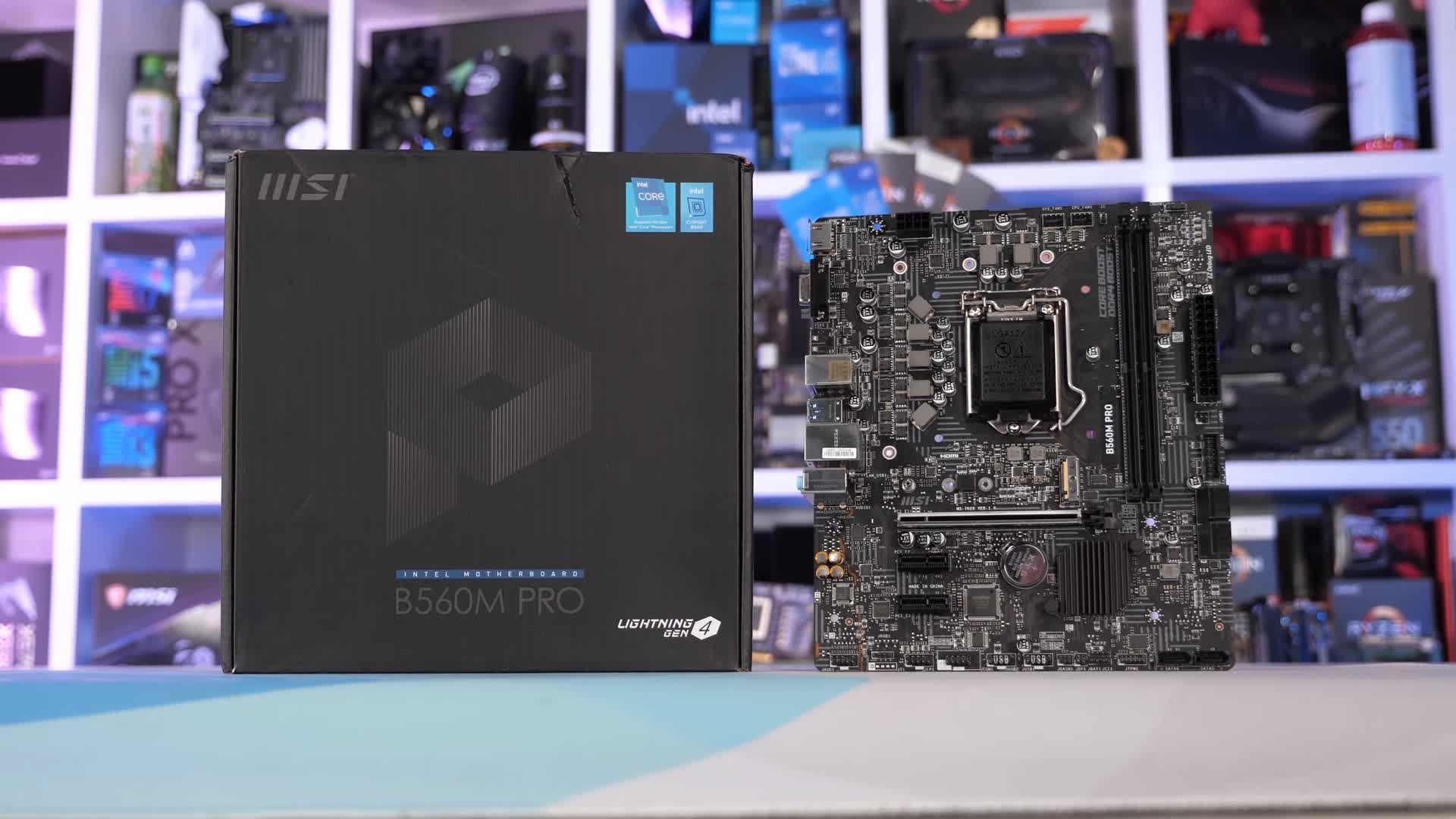
The Gigabyte B560M DS3H AC didn't avoid throttling either, though it only periodically dropped down to around 2 GHz, which is out of spec, and that meant the average frequency achieved was 4.1 GHz, or 300 MHz shy of the target. Interestingly, the Asrock B560 Pro4 didn't VRM throttle, but only managed 4.3 GHz with the power limits removed, though that's only a 100 MHz deficit.
The crazy part is that these boards all worked significantly better out of the box with the 125 watt Core i5-11600K, clocking no lower than 250 MHz below the 4.6 GHz all-core frequency. The reason is the higher TDP, 125w up from 65w, so there's little need to remove the power limits with a part like the 11600K, as you're only gaining around 200 MHz for heavy all-core workloads, less than a 4% drop in frequency.
Locking these boards to 125w seems like the way to go when using parts like the i7-11700, you won't get max performance, but you'll get very close while avoiding VRM throttling.
Bottom Line
We found out that if you're willing to do a little tinkering with the power limits, you can manually dial in most of these budget boards pretty well, but the point is that without some fairly knowledgeable user intervention, the platform is a total mess for builders.
The fact that out of the box performance can vary by up to 50% between B560 motherboards when using the same processor is insane. Let's clarify this is not a single motherboard manufacturer or a specific model screw up, this one's squarely on Intel.
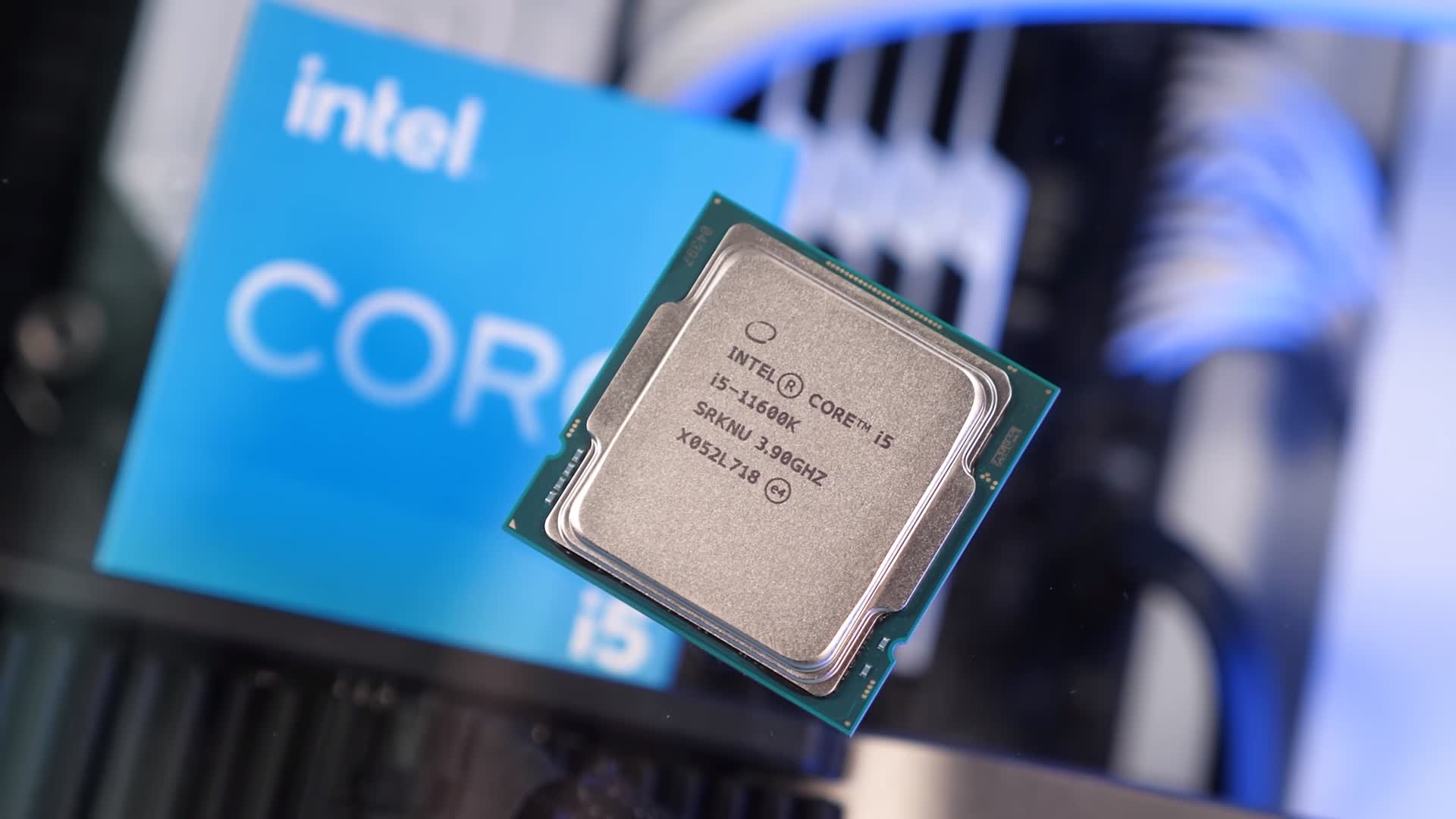
We could bash MSI for making the B560M Pro, and if we did we'd have to go after Asrock for the B560M-HDV, or Gigabyte for the B560M Power, or Asus for the B560M-P, all of those boards will suffer from the same issues and there's likely more. But technically all of these boards meet the Intel spec, the base spec or TDP spec as it's often referred to.
For their entry-level boards, each maker has ensured the VRM can handle the power requirements of the base spec, and that's about it. Essentially they're OEM motherboards, or rather should be OEM motherboards.
Intel 11th-gen Core i7 series
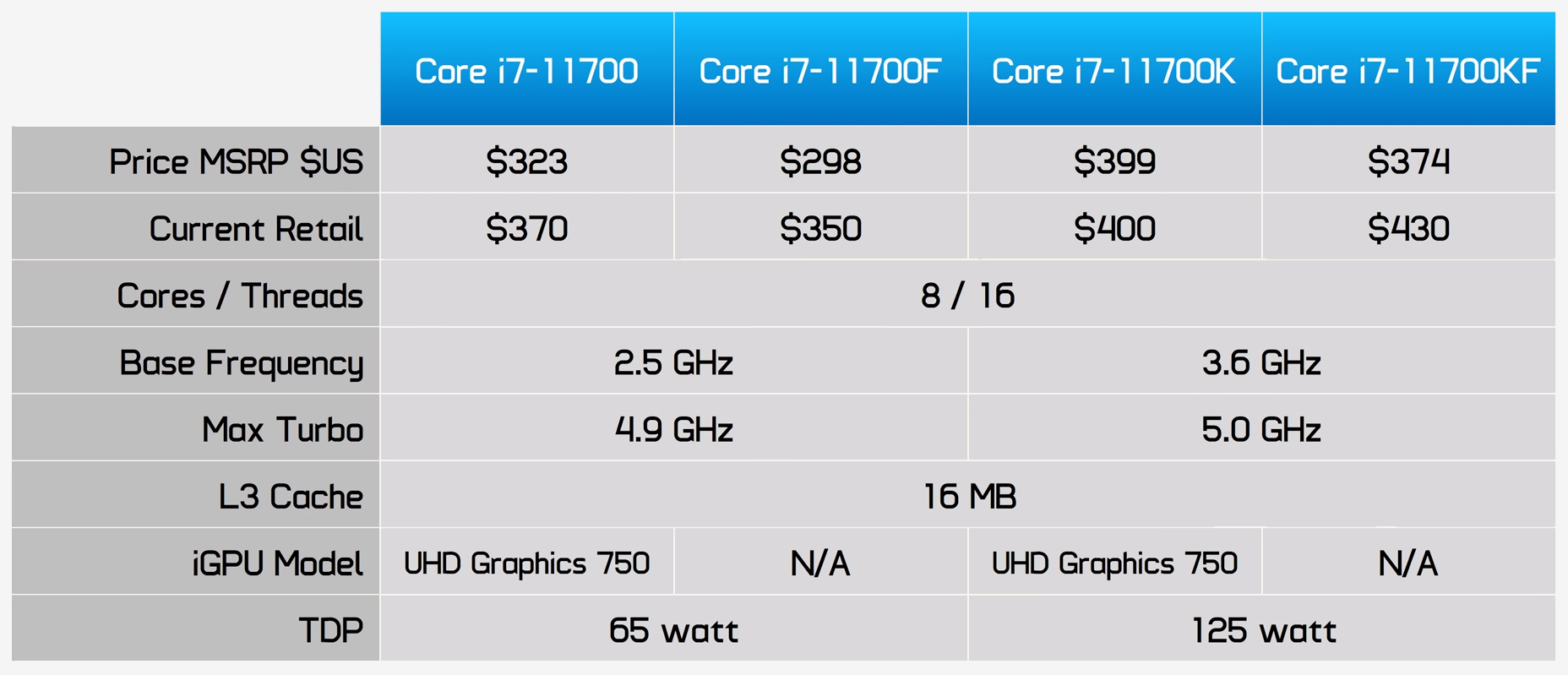
Even the MSI B560M Pro which clocks the i7-11700 as low as 2.9 GHz is within Intel's incredibly loosely defined spec. That's because the 11700 has an official base clock frequency of just 2.5 GHz, so as long as clocks don't drop below that, it's within spec. We only went out of spec with the power limits removed as this reduced the base clock under load to 800 MHz, with VRM throttling kicking in to save the board from thermal runaway.
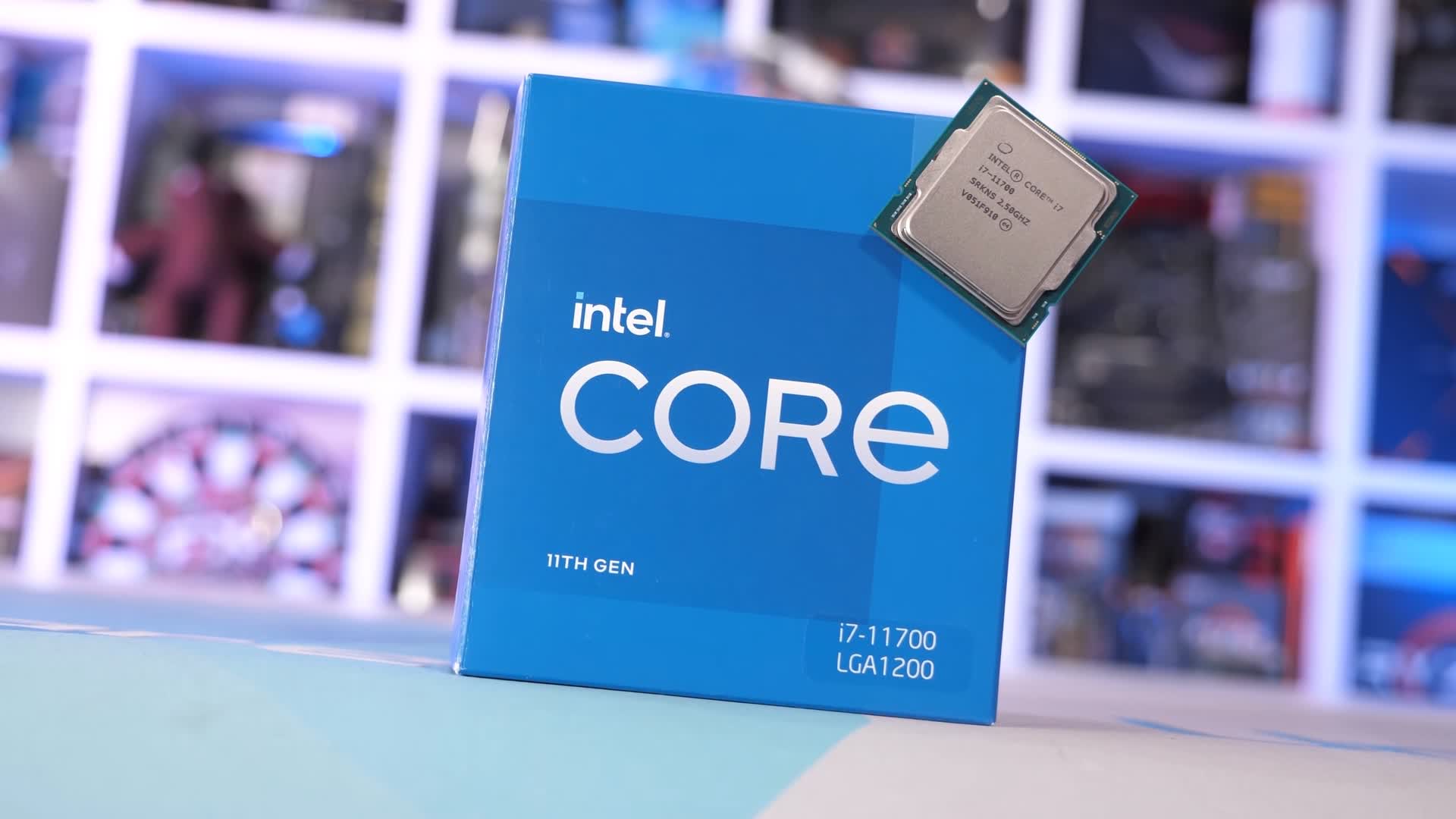
In the case of the Core i7-11700, we had boards that sustained load frequencies of 2.9 GHz right up to 4.4 GHz, and Intel will tell you all are running within spec. This has been caused by Intel's struggles to move on from their 14nm process. The loosely defined TDP spec wasn't an issue back in the Kaby Lake days when all Intel offered was a 4C/8T processor in their mainstream desktop lineup. But as they started to add more cores without major corrections to the TDP, we saw a gap between the base and boost clocks continue to widen.
For example, the 65w Core i7-7700 saw just a 17% disparity between its base and boost clocks, then with the 65w Core i7-8700 that figure increased to 44%, and now we're at a ludicrous 96% with the Core i7-11700.
Intel Core i7 series
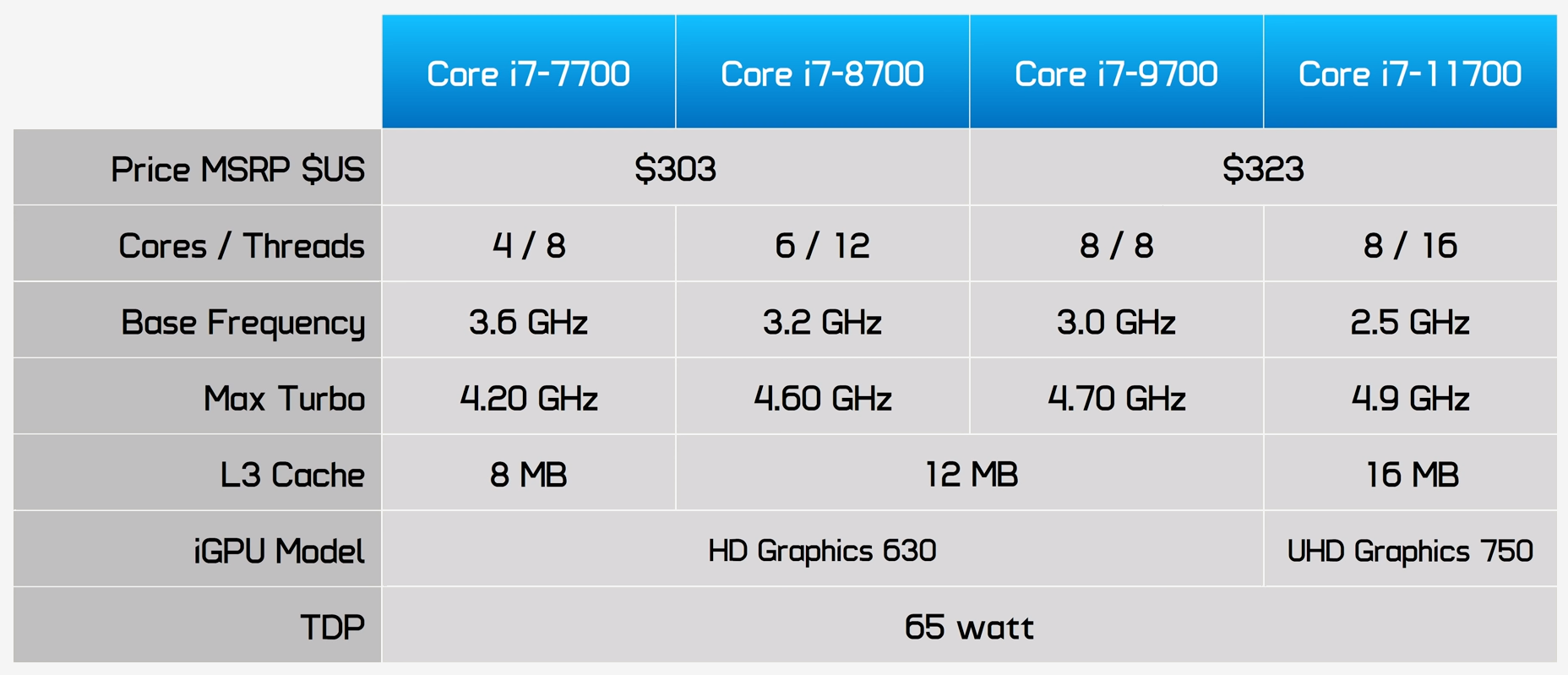
This is the situation we're faced with when recommending locked Intel CPUs on budget B560 motherboards. Moving forward, my job will be to work out just how little you can spend on a B560 motherboard and still achieve proper performance with parts like the Core i7-11700, ideally without having to manually fine-tune power limits.
Out of the box experience should be like the one offered by motherboards like the MSI B560 Tomahawk and Gigabyte B560M Aorus Pro, but without having to pay $200 for the privilege. Whether or not that's possible remains to be seen, but we plan to have some answers for you in an upcoming B560 VRM benchmark feature, which will cover many more boards. Until then, it's safer to avoid any sub-$140 Intel B560 motherboards.
